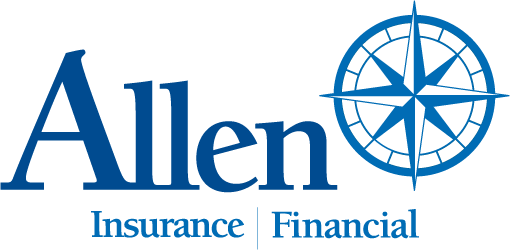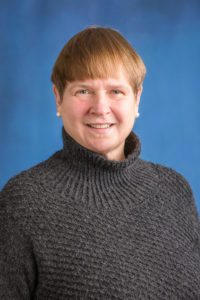If you have young children, grandchildren, or other little ones in your life who are dear to you, you might consider including them in your estate plan. One component of that estate plan may include naming them as a beneficiary on your financial accounts, insurance policies, or other assets via a will. While leaving assets to minors may seem like a simple solution, it can lead to unintended complications. In this article, we’ll explore the challenges minors face when inheriting assets and provide practical strategies to help ensure that your wishes are carried out smoothly.
What Challenges Do Minors Face as Direct Beneficiaries?
Minors legally cannot own or manage significant funds or property without a custodian. Here are the potential challenges when leaving assets directly to a minor:
- Custodianship: When a minor inherits assets outside of a trust, they will usually need a custodial account to manage the funds until they reach the age of majority. This account requires a designated custodian, who may be a parent, legal guardian, or another trusted person. If no custodian is named, then most often a natural parent or legal guardian will typically take on this role. Speak to your financial advisor or attorney for more information about how to elect a custodian.
- Lack of control: In almost all circumstances, control of custodial accounts must be transferred directly to the minor once they reach the age of majority as defined by state law (often either 18 or 21). This may not align with your original intention if the child isn’t ready to handle the inheritance responsibility.
- Probate: When leaving assets to a minor via a will, they could go through probate, a costly and time-consuming process that validates your will and distributes the assets. To avoid delays and complications, it’s important that all accounts have named beneficiaries, and you consider using a trust to bypass probate.
How Can You Establish a Trust to Protect a Minor’s Inheritance?
A trust is often the most flexible and effective way to ensure that your child’s inheritance is distributed according to your wishes. However, it is also often the most expensive. Here are some of the features of a trust:
- Control over distribution: You can set specific terms, such as distributing funds at milestones like graduating from college or reaching a certain age, ensuring that your child is prepared to manage their inheritance.
- Protection from mismanagement: A trustee (either an individual or institution) will manage the funds responsibly, ensuring that they are used appropriately, such as for education or housing, until the child is mature enough to take control.
- Extended control beyond age of majority: If you don’t want your child to have full control at 18 or 21, a trust allows you to distribute assets over time (e.g., 25% at age 25, 25% at 30, and the remainder at 35). This approach helps ensure your child’s financial maturity before receiving large sums.

When Might Custodial Accounts Be Appropriate?
If you’re looking for a simpler option, custodial accounts under the Uniform Transfers to Minors Act (UTMA) or the Uniform Gifts to Minors Act (UGMA) might be a good choice. These accounts allow you to transfer assets to a minor while appointing an adult custodian to manage them until the child reaches the age of majority (usually 18 or 21, depending on the state) via a beneficiary designation.
Key features of custodial accounts:
- Simple and cost-effective: Easy to set up with no complex administration. There are typically no ongoing fees or tax filings.
- No probate: Funds in a custodial account avoid probate via a beneficiary designation, ensuring a quicker transfer.
- Automatic control at age of majority: Once the child reaches the age of majority as defined by the state, they gain full control over the account, which may not be ideal if they aren’t ready to manage it. For this reason, custodial accounts may be best suited for smaller amounts or simpler needs.
Why Is Choosing the Right Trustee or Custodian Critical?
Whether you choose a trust or a custodial account, selecting the right person to manage the funds is essential. This person will be in charge of handling the money and making decisions, so they must be financially responsible, trustworthy, and likely to outlive you. It’s also a good idea to name a backup trustee or custodian in case your primary choice is unable or unwilling to take on the responsibility.
For larger sums or more complex situations, you might want to consider naming a professional trustee, such as a financial institution or estate planning expert, to ensure that the trust is managed according to your wishes. Speak with your financial advisor to determine if a professional trustee is the best option for you.
What Circumstantial and Tax Implications Should You Consider?
Leaving money or property to a minor can have tax implications that should be considered. One important factor is the kiddie tax, which applies to any unearned income (such as investment earnings) a child receives. If the amount exceeds a certain threshold, it will be taxed at the parent’s rate instead of the child’s, which could lead to a higher tax burden. Also, trusts are often taxed at higher rates than individuals, so if you set one up, it may quickly reach the highest tax bracket, even if the income is relatively low.
Additionally, retirement assets left to minors could affect their eligibility for student aid, and naming special needs beneficiaries could affect their government benefits. Always consult with your financial advisor and a tax professional to structure the inheritance in a way that minimizes tax consequences and aligns with your overall financial goals.
Have You Considered 529 Plans for Education-Specific Inheritance?
For those who want to leave funds specifically for a child’s education, a 529 college savings plan can be an excellent option. These state-sponsored accounts provide tax advantages when funds are used for qualified education expenses. The benefits include:
- Tax advantages: Contributions grow tax free, and withdrawals for education expenses are not taxed.
- Control: The account owner maintains control of the funds, even after the child reaches adulthood.
- Flexibility: If the child doesn’t need the funds, you can change the beneficiary to another family member. Additionally, starting in 2024, you can transfer a certain amount of funds into a Roth IRA for the beneficiary, offering additional flexibility for long-term savings.
Some estate planners recommend using a 529 plan alongside other inheritance tools, such as trusts, to create a comprehensive financial plan.
While naming a minor as a beneficiary is a thoughtful gesture, it requires careful planning to ensure that your assets are used responsibly and in the best interests of your child or grandchild. Consulting with an estate planning attorney, tax professional, and your financial advisor is key to creating a plan that aligns with your goals, minimizes tax implications, and helps avoid unnecessary complications in the future. By taking proactive steps today, you can ensure that your loved ones are supported when they need it most.
The fees, expenses, and features of 529 plans can vary from state to state. 529 plans involve investment risk, including the possible loss of funds. There is no guarantee that an education-funding goal will be met. In order to be federally tax free, earnings must be used to pay for qualified education expenses. The earnings portion of a nonqualified withdrawal will be subject to ordinary income tax at the recipient’s marginal rate and subject to a 10 percent penalty. By investing in a plan outside your state of residence, you may lose any state tax benefits. 529 plans are subject to enrollment, maintenance, and administration/management fees and expenses.
This material has been provided for general informational purposes only and does not constitute tax, legal, or investment advice. Although we go to great lengths to make sure our information is accurate and useful, we recommend you consult a qualified professional regarding your situation. Commonwealth Financial Network does not provide tax or legal advice.
© 2025 Commonwealth Financial Network®



 Setting Saving Goals
Setting Saving Goals



